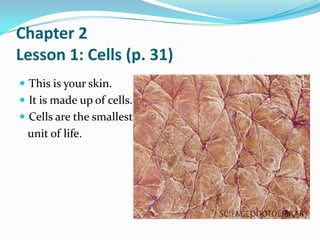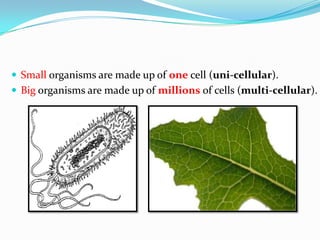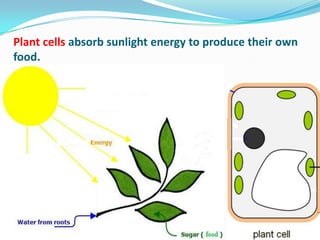cells - grade 6
- 1. What do plants, animals and people have in common?
- 2. Chapter 2 Lesson 1: Cells (p. 31) This is your skin. It is made up of cells. Cells are the smallest unit of life.
- 3. Cells are very small We use a microscope to see them. Hooke made the first microscope and discovered the cell.
- 4. Small organisms are made up of one cell (uni-cellular). Big organisms are made up of millions of cells (multi-cellular).
- 5. Jobs of a cell: Obtain nutrients and energy needed for the body. Removes wastes Grow and reproduce to give new cells. Muscle cells helps in moving your body. Skin cells help in protecting your body.
- 6. Plant cells absorb sunlight energy to produce their own food.
- 7. Cell Theory: 1. All living things are made of one or more cells. 2. Cells are the basic unit of life. 3. All cells come from other living cells.






